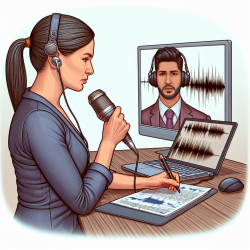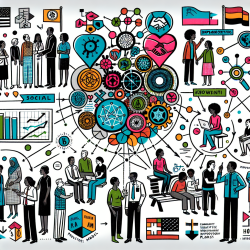Introduction
The Convention on the Rights of Persons with Disabilities (CRPD) represents a significant milestone in recognizing the rights of individuals with disabilities. The recent research article, "Measurable Indicators of CRPD for People with Intellectual and Developmental Disabilities within the Quality of Life Framework," offers a comprehensive approach to operationalizing these rights through measurable indicators. This blog explores how practitioners can enhance their skills by implementing these research outcomes and encourages further exploration of the CRPD framework.
Understanding the Quality of Life Framework
The Quality of Life (QOL) framework, as proposed by Schalock and Verdugo, serves as an effective tool for evaluating and implementing the CRPD articles. It encompasses eight core domains: rights, self-determination, social inclusion, interpersonal relationships, personal development, emotional wellbeing, material wellbeing, and physical wellbeing. Each domain interacts with the others, providing a holistic approach to assessing and enhancing the lives of individuals with intellectual and developmental disabilities (IDD).
Implementing Measurable Indicators
Practitioners can improve their skills by focusing on the specific indicators and personal outcomes identified in the research. These indicators are aligned with the eight QOL domains and the CRPD articles, offering a structured approach to operationalizing rights. For example:
- Personal Development: Ensure inclusive education and individualized supports within the general education system.
- Self-Determination: Promote freedom of choice and personal autonomy, allowing individuals to make their own decisions.
- Interpersonal Relationships: Facilitate opportunities for individuals to establish meaningful relationships and support family rights.
- Social Inclusion: Advocate for accessibility and participation in community life, including political and public engagement.
- Rights: Address issues of equality and non-discrimination, ensuring legal recognition and supported decision-making.
- Emotional Wellbeing: Protect individuals from exploitation, violence, and abuse, fostering a safe and supportive environment.
- Physical Wellbeing: Provide access to quality healthcare and rehabilitation services, ensuring comprehensive support.
- Material Wellbeing: Promote financial independence and access to adequate housing and social protection.
Encouraging Further Research
While the research provides a solid foundation, it also highlights areas that require further exploration. Practitioners are encouraged to delve deeper into the CRPD framework, particularly in under-researched areas such as situations of risk and humanitarian emergencies, access to justice, and the rights of women and children with disabilities. By engaging in ongoing research and professional development, practitioners can contribute to the continuous improvement of support systems for individuals with IDD.
Conclusion
Implementing the outcomes of the research on measurable indicators of the CRPD within the QOL framework offers practitioners a structured approach to enhancing their skills and ensuring the rights of individuals with IDD are respected and upheld. By focusing on the specific indicators and personal outcomes, practitioners can contribute to a more inclusive and supportive environment for individuals with disabilities.
To read the original research paper, please follow this link: Measurable Indicators of CRPD for People with Intellectual and Developmental Disabilities within the Quality of Life Framework.










